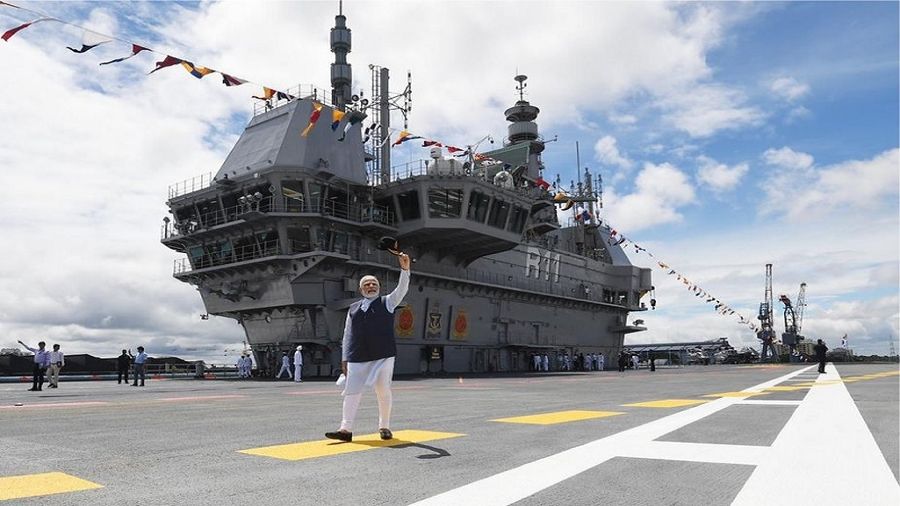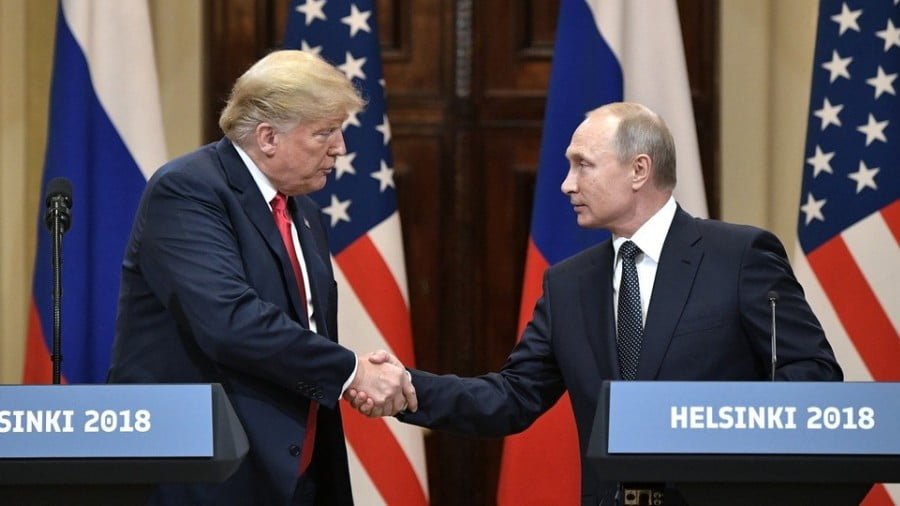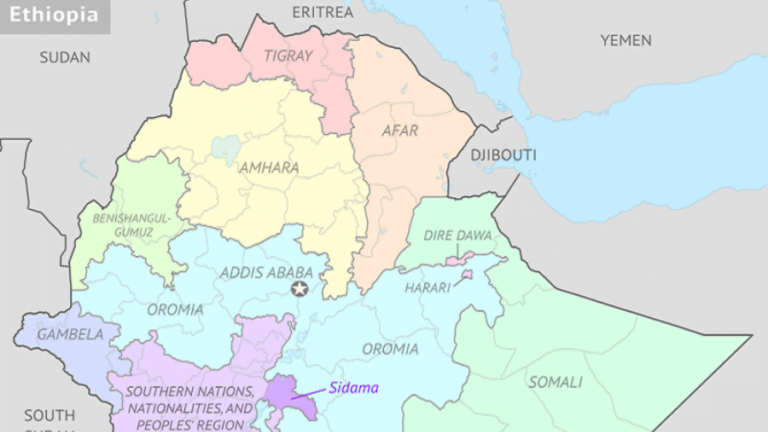Modi Made a Subtle Jab Against China While Commissioning India’s Aircraft Carrier
The Indian leader was subtly conveying his government’s view that China is already a developed country with similar socio-economic metrics as its Western counterparts. By tacitly denying recognition of China’s self-identification as a developing country, not to mention its claim to being the largest one, India is sending a signal to the rest of the Global South that they should look to it for leadership instead of to China.
India just launched its first indigenous aircraft carrier on Friday, during which time Prime Minister Modi made a subtle jab against China while commissioning it. He said that “So far, such aircraft carriers were only made by developed countries”, which on the surface doesn’t sound like much but is actually tacitly directed towards China. The People’s Republic is much more economically developed than its South Asian neighbor by all metrics, but it still identifies as a developing country, so much so that this self-description continues to figure prominently in its messaging towards the entire Global South.
Beijing is actively building its Belt & Road Initiative (BRI) all across Afro-Eurasia, Latin America, and Oceania, which it believes will help those dozens of participating states comprehensively accelerate their socio-economic development and thus ultimately liberate themselves from the neo-imperial chains placed upon them over the decades by the US-led West’s Golden Billion. Part of its appeal is that the Communist Party of China (CPC) has wildly succeeded with this at home, after which it promoted its model abroad on the basis that all similarly such developing countries could follow in its footsteps.
The popular perception of the People’s Republic as a fellow developing country helps build trust with its many partners because they feel comfortable with the knowledge that China keenly understands their struggle since it’s regarded as one of them in the socio-economic sense. This has in turn resulted in the massive spread of its soft power across the Global South, which more often than not eventually manifests itself through closer political, military, and strategic cooperation in order to improve the odds of them all achieving their shared goal of facilitating the global systemic transition to multipolarity.
India shares this same goal as well, but its multipolar leadership is also suspicious of China’s grand strategic intentions since it fears that the People’s Republic tacitly wants to replace the declining American hegemon’s role over the world system and thus unofficially usher in its own de facto form of unipolarity. That’s unacceptable for Delhi’s decisionmakers who are worried that such an outcome could result in them being coerced into unilaterally conceding on issues that they regard as being in their objective national interests such as those related to their bilateral trade and border disputes with China.
Accordingly, they ordered their military, intelligence, and diplomatic bureaucracies (“deep state”) to decisively intervene immediately after the start of the latest US-provoked phase of the Ukrainian Conflict to preemptively avert their special and privileged Russian strategic partner’s potentially disproportionate dependence on China by becoming its irreplaceable valve from Western pressure. That was a game-changing black swan development in the New Cold War since it irreversibly altered the trajectory of this global competition between the Golden Billion and the BRICS-led Global South.
Instead of the present bi-multipolar intermediary phase of the global systemic transition to multipolarity entrenching itself as the status quo for the indefinite future, whereby International Relations would continue to be largely shaped by the American and Chinese superpowers, India ensured that Great Powers such as itself and Russia could complementarily maximize their strategic autonomy in this context so as to accelerate the onset of tripolarity prior to complex multipolarity (“multiplexity”). From Delhi’s perspective, this would create the most geostrategically flexible environment for all countries.
So as not to be misunderstood or have the abovementioned insight maliciously misportrayed, India isn’t “against” China since it still closely cooperates with it bilaterally, through the Russia-India-China (RIC) core of BRICS, and in multilateral fora in order to jointly pioneer the Asian Century. These two multipolar Great Powers sincerely want to restore equality, fairness, and justice to International Relations and especially to the Global South that both countries consider themselves to be a part. The only difference between them, which shouldn’t be downplayed, is that India still doesn’t trust China’s intentions.
For however one feels about that, it’s nevertheless the sovereign right of the Indian leadership, which can’t be ignored if observers truly want to better understand that South Asian state’s policymaking calculations. Only upon acknowledging this – which isn’t the same as endorsing it – does Prime Minister Modi’s seemingly innocent comment while commissioning his country’s first indigenous aircraft carrier make soft power and strategic sense. The Indian leader was subtly conveying his government’s view that China is already a developed country with similar socio-economic metrics as its Western counterparts.
By tacitly denying recognition of China’s self-identification as a developing country, not to mention its claim to being the largest one, India is sending a signal to the rest of the Global South that they should look to it for leadership instead of to China. Delhi doesn’t want to cede its envisaged role over this bloc of countries and thus risk Beijing eventually exploiting it for ends that their policymakers feel uncomfortable about and which were earlier touched upon in this analysis. Once again, this is simply an observation and not an endorsement, and is being shared in order to better understand India’s policies.
Western readers might still struggle to comprehend why any of this is important enough to analyze in the first place, but its significance derives from the fact that India clearly feels confident enough with its newfound kingmaker role in the global systemic transition to multipolarity to show the whole world that it’s ready to actively compete with China for hearts and minds across the entire Global South. The means through which it’ll do so will remain to be seen, but this signaling of intent is enough for everyone to expect their “friendly rivalry” to intensify in the coming future







